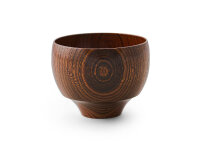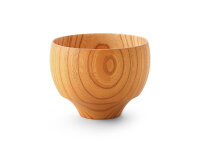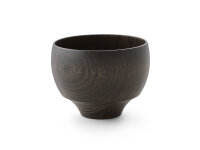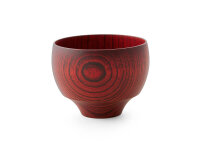
Exquisite Lacquerware
Exquisite Lacquerware from Japan
No other country is as renowned for its top-quality lacquerware as Japan. These exclusive products are referred to as "Shikki" and should not be confused with the simple and inexpensive, often plastic-like bowls and containers that flood the market. The authentic, very high-quality products are crafted from noble wood and adorned layer by layer with natural Urushi lacquer. Urushi resin lacquer is a pure natural product. Shikki comes in various colors, with red or black being common, but warm natural tones are also gaining popularity. Before clean rooms existed, Shikki was lacquered on the high seas to avoid any dust. The surfaces are astonishingly graceful and provide a gentle, soft feel. And of course, they are extremely lightweight, almost as if the bowls are floating in your hand.
Decorative, Exquisite Wooden Tableware
For those who are proud owners, the beautiful rice bowls and dining bowls should also be used. In authentic style, that means not with a knife and fork, but preferably with beautiful Japanese chopsticks. Despite their lightweight and beautiful finish, Shikki (lacquerware) is extremely durable and deserves a place on a well-set table. A bit of care and maintenance will make them lifelong companions that bring joy day after day.
Urushi, the Original Japanese Lacquer Art
The lacquer used in these demanding craft workshops is pure natural resin lacquer, also called Urushi, as is the technique of applying the many layers of lacquer artistically. It serves both to protect the noble wood and is also what makes these very high-quality products special. Skilled artisans, with years of training, create surfaces by hand that practically exude their enthusiasm, attention to detail, and tradition. It wasn't too long ago that these bowls were exclusively made for the imperial family and nobility.
The Technique Behind Urushi Lacquerware
The production itself is an elaborate process where even a small mistake can be fatal. There are over 30 steps in total for a single piece of tableware. Initially, a wooden core is primed and lacquered. In these steps, using a thin brush made from women's hair, the lacquer is delicately and carefully applied in multiple layers. The lacquer is then also scraped, sanded, and hand-polished, with these steps repeated multiple times. The result is a brilliant shine that is unparalleled. The mystical depth of the surface almost captivates the viewer. Objects lacquered in this manner can be further refined with techniques like Chinkin and Makie.
After the Urushi lacquer application comes the drying process, which is another significant challenge. Key factors include temperature, humidity, and air purity. During the drying process, not a single speck of dust can settle on the lacquer surface; otherwise, all the effort would be in vain. In ancient Japan, Urushi artists settled in mountainous areas or allowed their works to harden at sea, where there was hardly any dust. The color changes significantly during drying and also depend on natural environmental conditions. To achieve the desired color tone in the end product, the craftsman's experience is crucial.
Sustainability and Durability
Japanese lacquerware is one of the most sustainable types of tableware in the world. Almost all materials, except for the metal used, come from renewable resources. Wood and lacquer sap regrow over time, ensuring their availability for future generations. Original Japanese lacquerware is also durable for a lifetime. Users of the tableware will witness how it ages with them. Over time, the appearance of the lacquer changes. It's almost as if the tableware lives alongside its owner. However, one should keep their Japanese lacquerware away from the sun, as UV rays are not kind to it. Prolonged exposure can cause the lacquer layers to crack and render the tableware unusable.
Gato Mikio - Masterpieces from the Traditional Workshop
Gato Mikio was founded in 1908 in Yamanaka Onsen, Ishikawa Prefecture, in western Japan. For a long time, this high-altitude region has been producing artistic products made of Urushi lacquerware. Truly Japanese, truly handmade, truly craftsmanship. Gato Mikio leverages the benefits of traditional production to create exceptionally beautiful tableware, which has received numerous design awards. These products are now in demand worldwide but are available only in limited quantities. Gato Mikio consistently distances itself from mass production. The noble Japanese wood, skillfully crafted into bowls and dining bowls, is carefully selected for each product and is far too precious to be left to industrial production.




